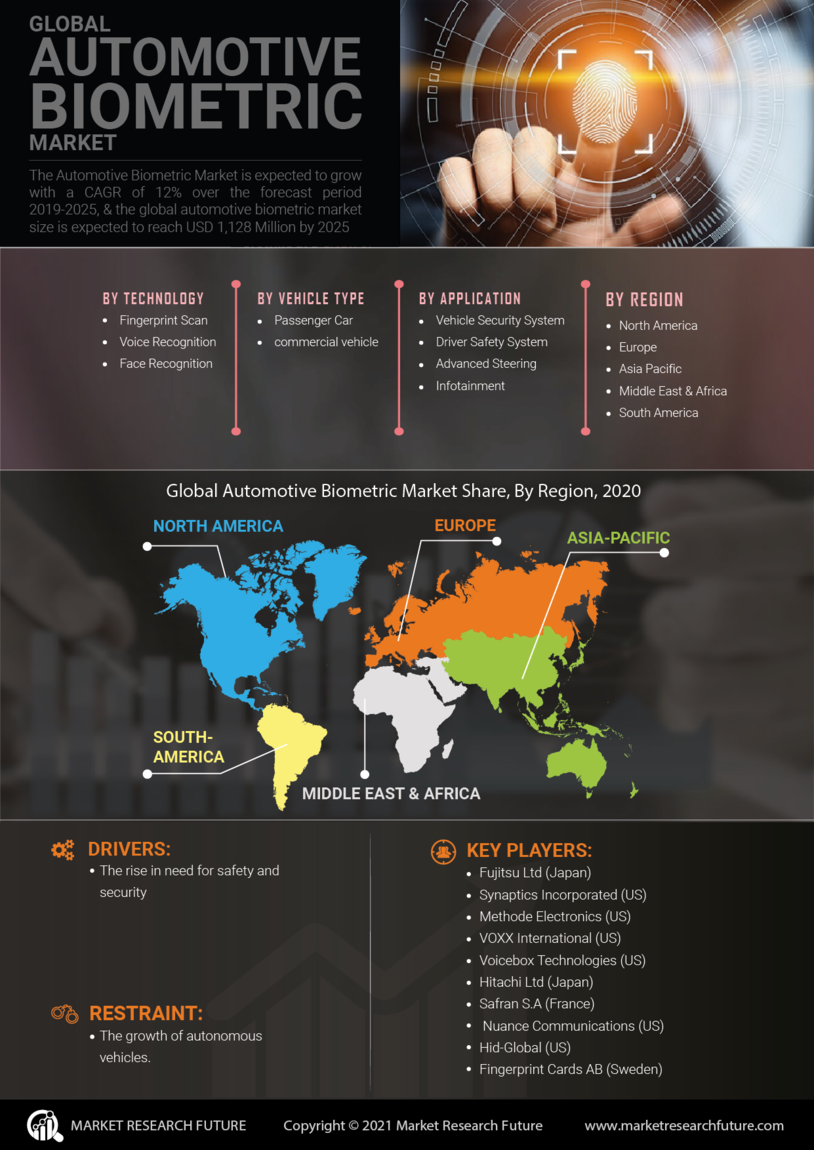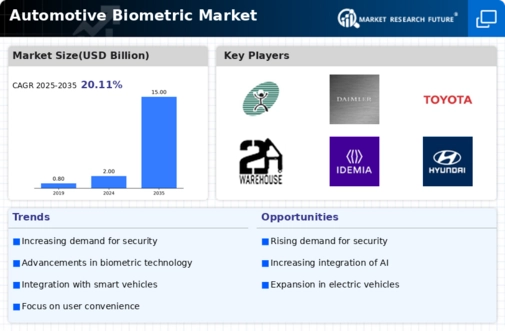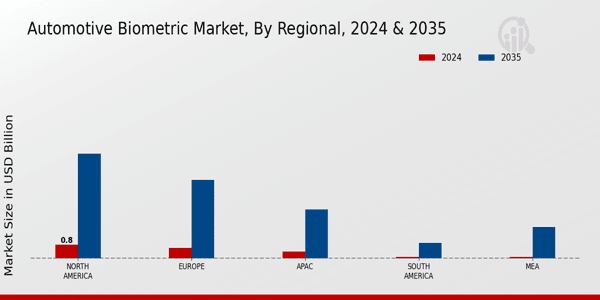Rising Demand for Enhanced Vehicle Security
The Global Automotive Biometric Market Industry is experiencing a surge in demand for advanced security features in vehicles. As automotive theft rates continue to rise, manufacturers are increasingly integrating biometric systems such as fingerprint recognition and facial recognition to enhance vehicle security. This trend is driven by consumer awareness and the need for personalized security solutions. In 2024, the market is projected to reach 2 USD Billion, reflecting the growing importance of biometric technology in safeguarding vehicles against unauthorized access. The incorporation of these systems not only deters theft but also provides a seamless user experience, thereby driving market growth.
Increasing Consumer Awareness and Acceptance
Consumer awareness regarding the benefits of biometric technology is on the rise, significantly influencing the Global Automotive Biometric Market Industry. As consumers become more informed about the advantages of biometric systems, such as improved security and personalized experiences, acceptance rates are likely to increase. This growing awareness is driving manufacturers to incorporate biometric features into their vehicles to meet consumer expectations. The market's growth is further supported by the anticipated compound annual growth rate of 20.1% from 2025 to 2035, indicating a robust shift towards embracing biometric technologies in the automotive sector.
Growing Focus on Driver Safety and Convenience
The Global Automotive Biometric Market Industry is increasingly influenced by the emphasis on driver safety and convenience. Biometric systems provide an additional layer of safety by ensuring that only authorized users can operate the vehicle. Features such as driver monitoring systems that utilize biometric data to assess alertness and fatigue are gaining traction. This focus on safety is likely to drive market growth, as consumers prioritize features that enhance their driving experience. The anticipated compound annual growth rate of 20.1% from 2025 to 2035 underscores the potential for biometric technologies to reshape the automotive landscape, making vehicles safer and more user-friendly.
Regulatory Support for Advanced Safety Features
Regulatory bodies worldwide are increasingly advocating for the integration of advanced safety features in vehicles, which positively impacts the Global Automotive Biometric Market Industry. Governments are implementing stringent safety regulations that encourage manufacturers to adopt biometric technologies. This regulatory support not only enhances vehicle safety but also promotes innovation within the industry. As a result, manufacturers are more likely to invest in biometric systems to comply with these regulations. The growing emphasis on safety standards is expected to contribute to the market's expansion, aligning with the projected growth trajectory towards 15 USD Billion by 2035.
Technological Advancements in Biometric Systems
Technological innovations play a pivotal role in the Global Automotive Biometric Market Industry. The development of sophisticated biometric technologies, including iris recognition and voice recognition, is enhancing the functionality and reliability of automotive biometric systems. These advancements are likely to improve user experience and increase adoption rates among consumers. As manufacturers invest in research and development, the market is expected to expand significantly, with projections indicating a growth to 15 USD Billion by 2035. This growth is indicative of the increasing integration of cutting-edge technology in vehicles, which aligns with consumer expectations for modern automotive features.
























Leave a Comment